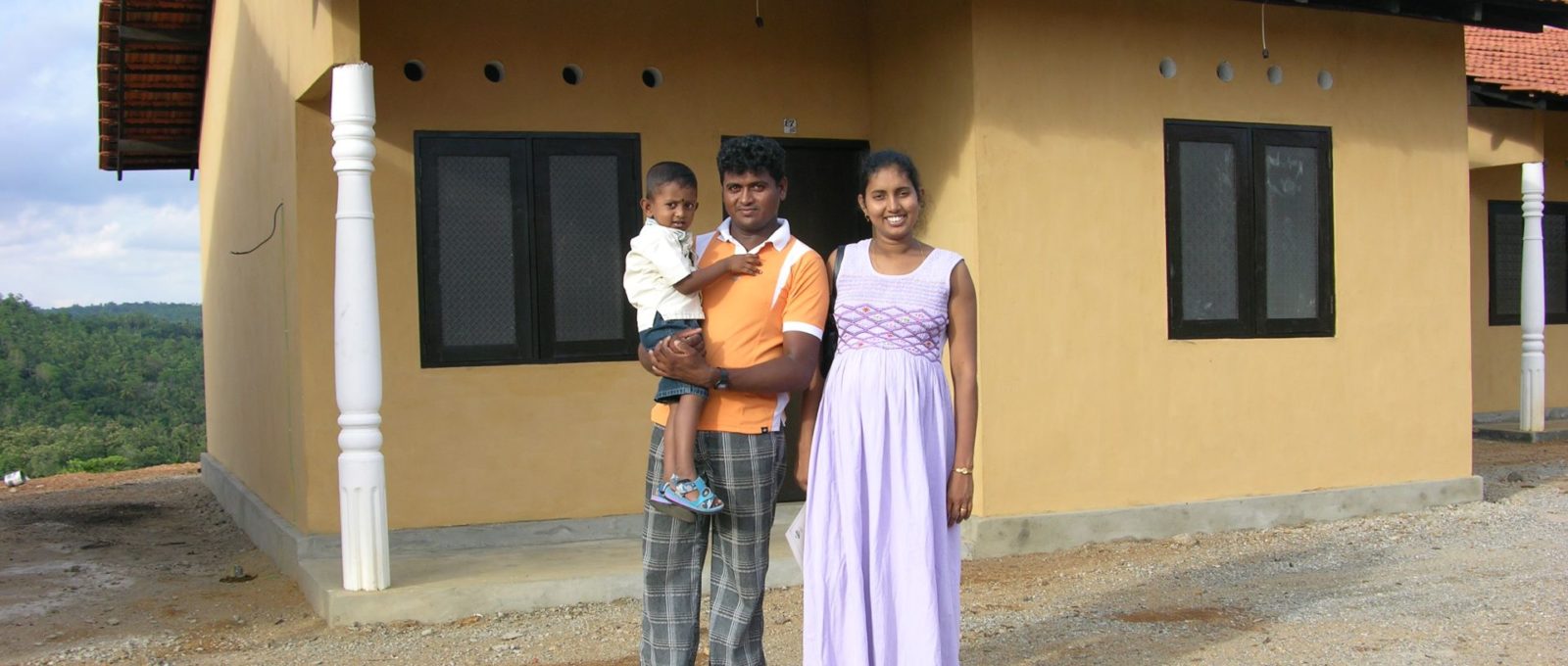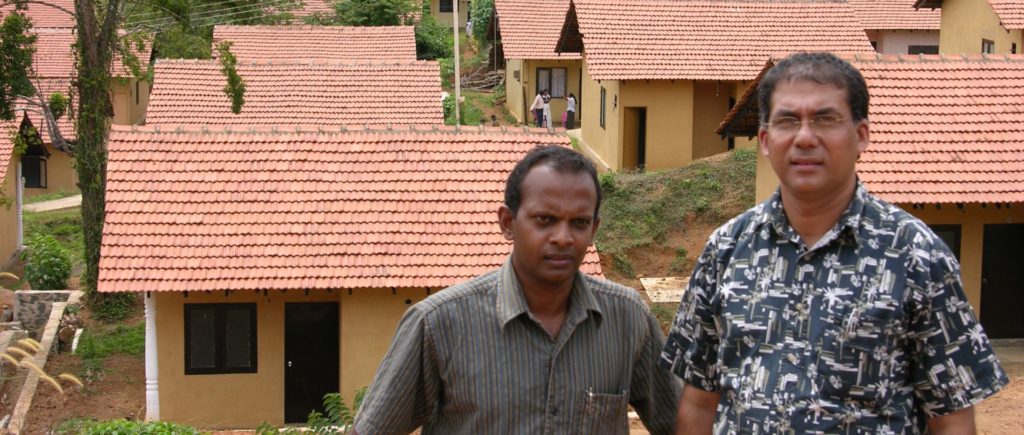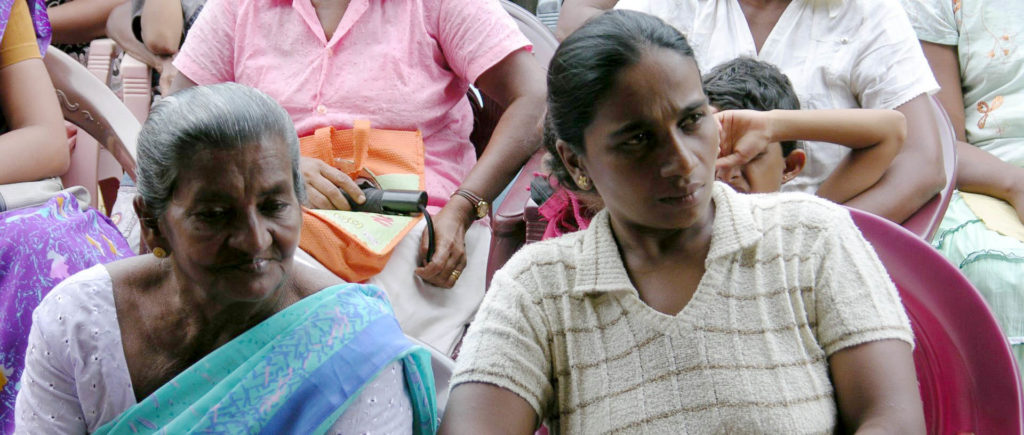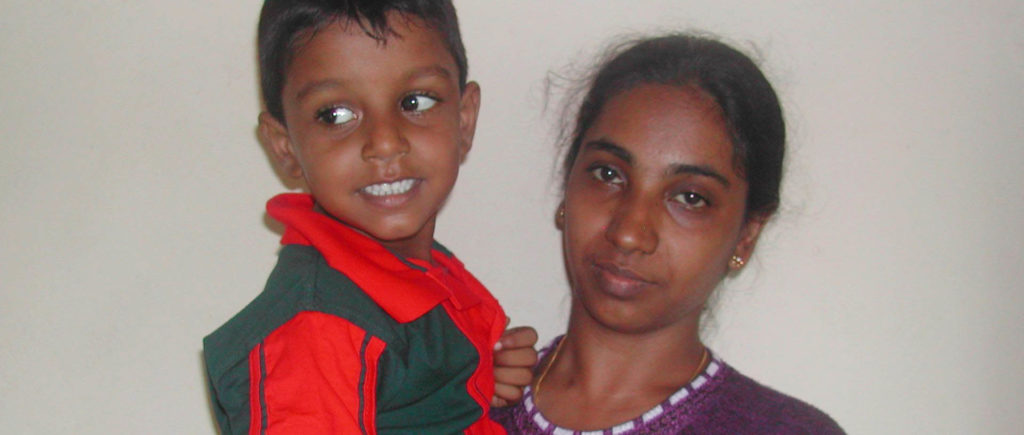(COMPLETED PROJECT 2004-2008)
The most powerful earthquake in 40 years rocked the island of Sumatra, Indonesia on December 26, 2004. The quake unleashed a giant tsunami that crashed into the coastline of South and Southeast Asia, killing more than 220,000 people.
Sri Lanka was one of the hardest hit countries. Over 31,100 were recorded dead, 4,115 missing and over 540,000 people displaced. The latest figures published by the Department of Census & Statistics, Sri Lanka, put the number of fully damaged housing units at 41,393 and partially damaged houses units at 36,168 which add up to a total of 77,561. “Re-building such a large number of houses in a short time is a very daunting task since the total number of houses constructed in the entire country per year adds up to about four to eight thousand only” says Mr. Mano Tittawella, Chairman of the Presidential Task Force for Rebuilding the Nation (TAFREN).
RE-BUILDING SHATTERED LIVES
We planed to ‘re-build shattered lives’ by providing permanent houses to families that lost their homes and belongings as a result of the tsunami thereby demonstrating God’s love in a practical way. Presently most of these affected families are living in camps, tents, makeshift shelters, temporary housing, churches, temples or with extended family members whose houses are still standing.
This project was a partnership between us and the City of Chilliwack’s Aid Response Team (CART) who committed to help build 55 homes. We were responsible for the funding of the other 45 homes and had sought partners your for this project to help make a difference not as individuals but as a united people working together to provide relief and hope.
The Strategy
The government of Sri Lanka allotted 12 acres of land to GAiN to establish a community with 100 houses in the village of Kirihandeniya Watta, District Matara.
The houses were be allotted to families that have lost their homes. When choosing beneficiary families, a representative of GAiN acted as a member of the Damage Assessment Team (DAT) established by the Divisional Secretary in each provincial division. DAT visited each household affected by the tsunami and authenticated their eligibility.
House description
The houses were single-storied individual (SI) units. Each house had a floor area of 500 square feet with two bedrooms, a living room, kitchen and a toilet. Each house was provided with masonry walls with 6” cement blocks, external and internal plastering, timber frame roof with asbestos roof including a polished embedded ply ceiling with tile roofing, plumbing, sanitary fittings, sewage, electrical fittings and finished with painting on the outside and inside.
They could not believe that people they did not know had crossed the world to come help their country, and then at no cost, give them newly built homes. In the worst of circumstances, God has brought good out of disaster and touched many lives. A team from GAiN and CART had gone down to help finish and to commision the first 25 homes.
November 2007
The general pace of the rebuilding efforts in Sri Lanka since then had been slowed for all humanitarian aid organizations, in large part due to constant armed conflict in the north of the country. Fifty of the remaining homes were completed by the end of summer of 2007, and our in-country staff told us that the remaining 25 homes were to be completed by the end of November. As was the case with the first 25 families, we were confident that when the remaining waiting families received their houses, they were deeply touched by the reality that people they did not know crossed the world to come help their country, at no cost, to give them newly built homes.
One family that were impacted was Mr. Vilmet and his family. Mr. Vilmet is a retired Government officer. His wife is a retired math teacher & their son (L. G. Indika) is a nurse at the Karapitiya hospital at Galle. His house was located 30 meters from the shoreline in Kottegoda and was destroyed in the tsunami. They had two houses on the same lot and their son & his family stayed in the other house. The son’s wife name is L. G. Samanthika & they have a one year old baby boy (L.G. Pasindu Hasauru). Ms Samanthika told us that they were caught in the first wave & her husband carried their son and they survived at the Tsunami. Mr. Vilmet & his family were living in a temporary shelter and his son and his family were living in a rented house at $35 monthly.




